Organizing your Ancestors’ Research is not just a daunting task; it can also be truly liberating.
Organizing Ancestors’ Research
A well-structured approach ensures that you can easily find the information you need when you need it.
If you find yourself lacking in organizational skills, it’s time to prioritize this essential aspect of genealogy research.
When delving into your Ancestors’ Research, you will inevitably accumulate a vast amount of information and numerous documents.
There are several methods for organizing these files, and you can always adapt your system as your knowledge grows.
The time and stress you save in the long run make it well worth starting a filing system now.
To help you stay organized and focused, consider the following suggestions:
First, I extend an invitation to you to explore my articles, “3 Common Genealogy Research Mistakes | Practical Examples” and “Websites For Professional Genealogists.”
✨ Check Out My Go-To Tools And Resources:
Visit my new Resources Page to see the tools, resources, and companies I use and recommend for my website and YouTube channel. Curated for efficiency and creativity.
👉 Explore: [Tools And Resources]
Establish a Data and Filing System
Being organized significantly speeds up your research process, especially when dealing with substantial amounts of data and documents.
A well-structured filing system can save you years of frustration and time.
Choose the Right Filing Method
Select or create a system that best suits your needs. You can opt for software-based solutions, manage your data online, or go with a traditional paper filing system.
Summarize Your Findings
- Maintain summaries of your research to quickly pick up where you left off, even after some time has passed.
- Using different colors to designate files and surnames can aid in easy recall and location.
- Additionally, write legibly to ensure that your notes remain comprehensible for future reference.
By incorporating these strategies into your Ancestors’ Research process, you will find that staying organized simplifies your work.
And it also enhances your overall experience as you delve into the fascinating world of genealogy.
Starting Your Ancestors’ Research Journey
When embarking on the fascinating journey of Ancestors’ Research, it’s best to begin in the present and gradually work your way backward in time.
This method ensures a systematic approach to discovering your family’s history. Here’s a step-by-step guide to get you started:
Begin with Yourself
Start by recording all the facts and information you are aware of about your own life. Assume that the details you know are accurate, and create a comprehensive record.
Document Your Parents’ Details
Move on to the next generation—your parents. Make a comprehensive list of everything you know about them:
- Including their names.
- Dates of birth.
- Marriage.
- And any other relevant information.
Explore Your Grandparents
Now, focus on your grandparents. You have four of them, so compile as much information as possible about each of them.
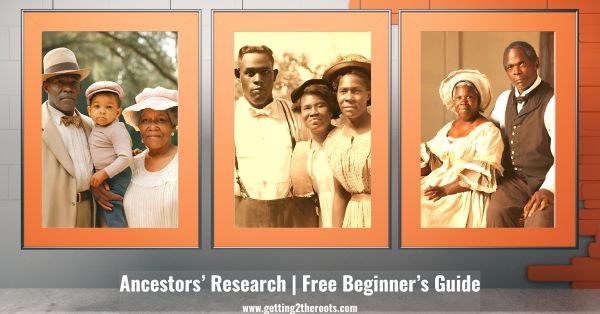
Continue Down the Generations
Extend your research to the next generation, and then the one after that, as far back as you can trace your family tree. Proceed methodically, documenting information for each individual.
Initiate Family Interviews
Once you’ve exhausted the information available to you, it’s time to engage with your family members.
Develop interview questions based on the specific answers you’re seeking, and consider that one of your relatives might have already begun their own Ancestors’ Research journey.
Collaborate and Share
In the event that another family member has already delved into researching your ancestors, it’s a great opportunity to collaborate.
Share and compare notes, records, and photographs, which can provide valuable insights and connections in your collective pursuit of ancestral knowledge.

Consulting Relatives to Uncover Ancestors
An invaluable resource in your quest to discover your ancestors is consulting with your family members.
The process of gathering information from relatives is a crucial step in your Ancestors’ Research journey. Here’s how to go about it:
Interview Family Members
Start by interviewing your parents, and then move on to the oldest family members available to you.
However, don’t limit your inquiries to just a select few. Aim to speak with as many family members as possible during the interview process.
Be Patient and Persistent
Bear in mind that this is not a quick process and may require a significant investment of your time and patience.
Clearly define your objectives in terms of what you want to learn or verify, and tailor your questions accordingly.
Listen Actively
During the interview, adopt the role of a listener rather than an interrogator. Build rapport, put your family members at ease, and encourage open conversation.
Ask About Their Lives
Inquire about various aspects of their lives, including:
- Their upbringing
- Parents,
- Siblings,
- Family members’ occupations,
- Holiday traditions,
- And their own children.
This comprehensive approach helps paint a more vivid picture of your family’s history.

Share Family Memories
Engage your relatives in conversations about shared family memories and recount some of your own childhood experiences.
This sharing can foster a deeper connection and provide valuable insights.
Flexible Interview Methods
In situations where face-to-face contact is not possible, such as during a pandemic:
- Consider conducting interviews over the phone.
- Through video conferencing tools like FaceTime or Zoom.
- Via email or even by sending letters to family members.
This adaptability ensures that you can continue your research under various circumstances.
Connect on a Personal Level
Use this opportunity to connect and reconnect with your family on a more personal level, strengthening your familial bonds.
Document and Record
- Crucially, document or record all the information you gather immediately.
- It may take multiple conversations to uncover all the knowledge your family members possess.
- Staying organized and diligent in capturing these details is essential for successful Ancestors’ Research.
Ancestors’ Research and Records
With the information gathered and a system for organization in place, it’s time to transition your research into the online realm, where much of it can be efficiently completed.
This phase involves an open-minded approach and the readiness to assimilate all kinds of information, even when it might be challenging.
Exploring a Wealth of Records
As you embark on this online research journey, you’ll find a treasure trove of records that can reveal significant details about your ancestors. Some of the key sources to consider include:
1. The United States Census
Census records are invaluable in tracing the lives and locations of your ancestors. They provide a wealth of demographic and household information, aiding you in understanding your family’s history.
Discover the rich insights within U.S. Census records from 1790 to 1950. Uncover ancestral stories and historical details. Dive into our article, “What’s In The Census | 1790 To 1950,” and start your journey today.
2. Voting Records
Voting records can shed light on your ancestors’ political participation, their residential history, and their civic engagement.
3. School Records
Delve into school records to uncover educational milestones in your family’s history. These records often reveal where your ancestors attended school and their level of education.
4. Military Records
Military records provide insights into your ancestors’ service, offering details about enlistment, service dates, ranks, and even battles they participated in.
5. Church Records
Church records document your ancestors’ religious affiliations, baptisms, marriages, and burials, providing a window into their spiritual lives.
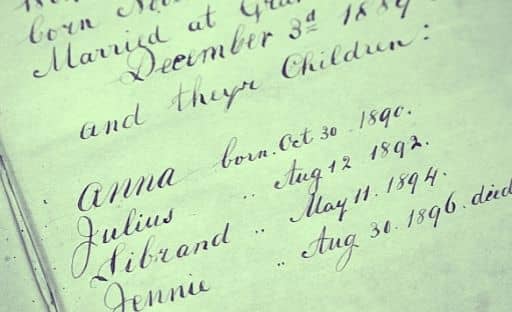
6. Property Records
Property records showcase land ownership and transactions, which can illuminate your ancestors’ economic standing and residential history.
7. Prison Records
For a deeper understanding of your family’s history, explore prison records to identify any ancestors who may have had encounters with the criminal justice system.
8. Land Records
Land records offer essential information about land ownership, including property boundaries, transactions, and land usage.
9. Wills
Wills are invaluable for tracing the distribution of your ancestors’ estates and identifying beneficiaries.
10. City Directories
City directories provide a snapshot of your ancestors’ lives within specific communities, offering information about residences, occupations, and more.
These are just a few examples of the diverse range of information accessible online.
By exploring these records, you can unravel the past and uncover the intricate threads that compose your family’s history.
Essential Tools for Ancestors’ Research
In the realm of Ancestors’ Research, a diverse array of websites and tools can significantly enhance your investigative efforts.
Here’s a compiled list of resources to aid you in your genealogical journey:
| Website/Tool | URL |
|---|---|
| Ancestry | Ancestry |
| iGENEA | iGENEA |
| Newspapers.com | Newspapers.com |
| FindMyPast | FindMyPast |
| MyHeritage | MyHeritage |
| Living DNA | Living DNA |
| FamilyTreeDNA | FamilyTreeDNA |
| Mapping the Freedmen’s Bureau | Mapping the Freedmen’s Bureau |
| FamilySearch | FamilySearch |
| FindAGrave | FindAGrave |
| GEDmatch | GEDmatch |
| DNA Painter | DNA Painter |
| GenealogyBank | GenealogyBank |
| David Rumsey Historical Map Collection | David Rumsey |
| National Archives | National Archives |
| Fold3 | Fold3 |
| WikiTree | WikiTree |
| Canva | Canva |
| Google Search | Google Search |
| Google Books | Google Books |
| Google Maps | Google Maps |
| Google Docs | Google Docs |
| Google Sheets | Google Sheets |
These invaluable resources and tools will empower you on your journey to unravel your family’s history.
Harness their capabilities to delve deeper into your Ancestors’ Research and unlock the secrets of the past.
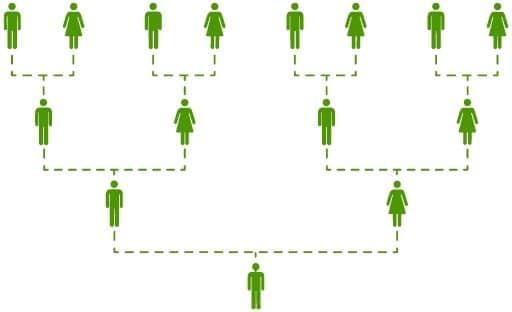
Exploring DNA Testing
The decision to undergo DNA testing is a highly personal one, with individuals often weighing various factors before taking the plunge.
There are a variety of factors that can affect this decision, and I occasionally find myself thinking about it.
A Doggone Good Reason
In my case, an amusing dog story told by an older cousin tipped the scales in favor of DNA testing.

The dog story revolved around my grandfather, Henry Creal, whose identity had long remained a perplexing puzzle.
This enigma prompted me to delve into my family history. Taking the DNA test was the pivotal step I chose to take, and it led to more discoveries than I could have imagined.
Unveiling Ancestral Identities
The DNA test not only unraveled the mystery surrounding my grandfather’s identity but also unveiled the concealed history of my great-great-grandfather, Harrison Duckworth.
I encourage you to delve into his narrative for inspiration when crafting your own ancestors’ stories. [Read More]
And it connected me with my third cousins. The depth and richness of our family history became more vivid, and I am immensely grateful to my cousin for sharing her story.

The Science Behind DNA Testing
DNA, or deoxyribonucleic acid, is the fundamental building block of our bodies. It serves as the genetic blueprint that shapes our physical characteristics.
Beyond this, DNA holds markers that convey vital information about our family history.
Unlocking Ancestral Insights
- Scientists delve into the analysis of DNA by examining the markers present in various samples.
- Through this comparison, they can determine the geographic origins of our ancestors.
- And map out the paths they traversed throughout history.
- DNA testing unveils a fascinating journey into our ancestry, unlocking a tapestry of stories waiting to be discovered.
Four Crucial Insights Before Taking a DNA Test
Before embarking on your DNA testing journey, there are four essential insights that can significantly enhance your experience and the knowledge you gain about your ancestry.
1. Understanding DNA Inheritance
To fully grasp how DNA testing works and how it relates to your ancestry, it’s crucial to understand the mechanisms of DNA inheritance.
In my article, “Deciphering the Codes: How to Read DNA Test Results,” I delve into the intricacies of DNA inheritance and its impact on your familial connections.
2. Diverse DNA Test Options
There are several DNA test options, each offering unique insights into your family history:
- Y-Chromosome DNA (Y-DNA): This test traces your paternal ancestry, reaching back thousands of years. It follows a direct male-to-male line of inheritance since females do not inherit the Y chromosome.
- Mitochondrial DNA (mtDNA): mtDNA explores your maternal ancestry, extending thousands of years into the past.
- Autosomal DNA: This test provides information about your most recent ancestors, offering a comprehensive overview of your genetic heritage.
3. Recognizing Testing Providers
Choosing a reputable DNA testing company is essential for accurate and reliable results. Here are some well-known companies in the field:
Selecting the right testing provider is the first step in uncovering your family history.
4. Understanding Your Family Connections
Many people struggle with distinguishing between different levels of cousinhood, such as first cousins, second cousins, and those once or twice removed.
If you have ever pondered the distinction between a first cousin and a first cousin once removed, I invite you to explore my article, “Cousin | Understanding the Meaning of First Cousin Once Removed.”
Gaining this knowledge empowers you to construct a more accurate and detailed family history.
Armed with these four crucial insights, your DNA testing journey will be enriched, providing a deeper understanding of your heritage and familial ties.

Choosing the Right DNA Testing Company
When it comes to selecting the best DNA testing company, the choice is deeply personal and often hinges on the specific information you’re seeking to uncover about your ancestry.
Each company offers unique capabilities tailored to different genealogical pursuits.
Uncovering Family Origins
Some individuals embark on a DNA testing journey to trace their lineage back to their parents or grandparents.
Others are determined to unearth the countries from which their ancestors originated.
In my case, I was on a mission to establish the true identity of my grandfather, and for this quest, I turned to Ancestry.
Ancestry: A Familial Connection
Ancestry proved to be the ideal choice for me since many of my family members had already taken tests through this company.
The availability of known second cousins was essential in my quest to confirm whether Henry and Amanda Creal/Creel were, indeed, my grandfather’s parents.
Additionally, I hoped to learn more about my father’s family because he did not grow up with his biological parents and therefore had little knowledge of his own family history.
The Importance of Choosing the Right Test
While Ancestry’s autosomal DNA test was the path my brother and I initially took, it soon became clear that it might not yield the precise results needed.
As it turned out, we required a different test to delve into the specifics of male ancestry.
The key lies in understanding the fundamental difference between male and female genetic makeup.
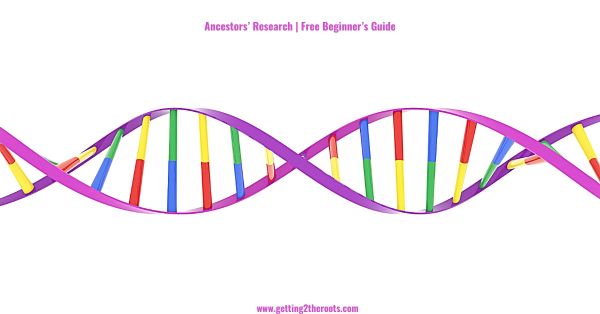
Females carry XX chromosomes, while males have XY chromosomes. To access ancestry information specific to the Y chromosome, a unique test is required, and only males can take this test.
This distinction highlights the significance of selecting the right test to suit your genealogical objectives.
In summary, the best DNA testing company for you depends on your unique research goals and the specific information you aim to uncover.
Be mindful of the available tests and their suitability, ensuring you choose the path that aligns with your ancestral quest.
Again, it’s a personal choice to test your DNA. However, the information you seek will determine the company you choose to test with.
Some people are attempting to locate their parents or grandparents. Some are attempting to find out what country their ancestors came from.

Crafting Your Family Tree
A family tree serves as a visual representation of the intricate connections among members of a family spanning multiple generations.
This powerful tool allows us to trace our lineage and understand our ancestral roots. To construct a family tree, follow the steps below to ensure a meticulous and accurate representation of your heritage.
1. Ancestral Exploration
Begin by undertaking a comprehensive search for your ancestors, as detailed in the previous sections.
Collect all available information about your family’s history, confirming its accuracy to the best of your ability.
2. The Quest for Accuracy
Diligently verify and cross-check all the data you’ve gathered. Precision is paramount in building a reliable family tree.
So don’t shy away from digging deeper and asking challenging questions to uncover the truth.
Consider the following critical questions:
- Does this information align with other data you possess?
- Can you verify the credibility of your information sources?
3. Tools for Constructing Your Tree
You have various options to create your family tree, both online and offline, with both free and paid alternatives. Here are some noteworthy platforms:
Online (Websites):
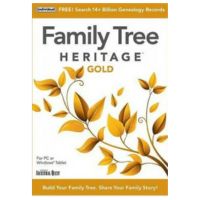
Offline (Software):
Ancestry websites, in particular, offer a wealth of resources. They provide hints related to individuals in your tree, but these hints should be meticulously verified.
The platforms facilitate the organization of your family tree, allowing you to attach documents to relevant individuals.
4. Methodical Data Verification
Before adding any information to your family tree, perform a thorough double-check of all your data. Accuracy is of paramount importance to ensure that your lineage is accurately depicted.
5. Comprehensive Inclusion
A family tree is an expansive endeavor, encompassing not only oneself but also;
- Parents,
- Grandparents,
- Great-grandparents,
- And even great-great-grandparents.
The depth of your tree will depend on how many generations you choose to explore.
For instance, considering your great-great-grandparents constitutes delving into the third generation before your own.
Include third cousins, third cousins removed, great-great-aunts, and great-great-uncles in your family tree, as their connections provide invaluable context.
Don’t forget to account for spouses and the parents of family members, if desired. Moreover, document all adoptions, particularly when no blood relations are involved.
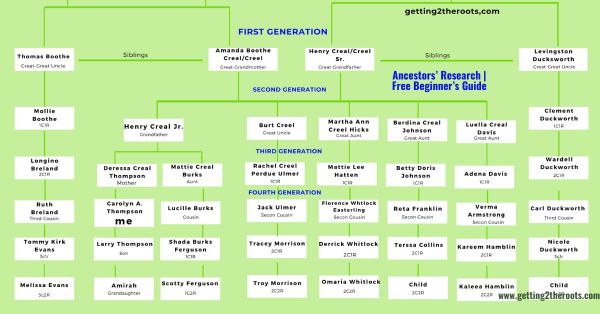
In the spirit of comprehensive research, it’s essential to leave no stone unturned in capturing the richness of your family’s history.
Building a family tree and tracing your ancestors becomes more manageable when you understand how you are connected to your relatives.
For a comprehensive guide on constructing your family tree, be sure to explore our article, “How to Build Your Family Tree | For Beginners.”
Additionally, if you’re interested in building a family tree online, our article, “Creating a Stunning Family Tree Online: Tips and Tricks”
This resource will provide you with additional insights and strategies to make your genealogical journey all the more rewarding.
Conclusion
Embarking on the journey of Ancestors’ Research is a deeply enriching experience.
With the right tools and knowledge, you can uncover the intricate tapestry of your family’s history and heritage by:
- Understanding your ancestral roots.
- DNA testing.
- Constructing a family tree.
- Accessing a wealth of records is one of the key elements of this remarkable voyage.
- By exploring online resources.
- Choosing the right DNA testing company.
- Employing meticulous research techniques.
You can breathe life into the stories of those who came before you.
The more you delve into the past, the more you will come to understand and appreciate your own place in the grand narrative of human history.
Five Frequently Asked Questions (FAQ)
(Q) How do I get started with Ancestors’ Research?
(A) To begin, gather as much information as possible about your family and ancestors. Organize your research, access online resources, and consider DNA testing for deeper insights.
(Q) Which DNA testing company is the best for genealogical research?
(A) The choice of a DNA testing company depends on your research goals. Popular options include Ancestry, MyHeritage, and FamilyTreeDNA. Consider your objectives and available tools before deciding.
(Q) What are the essential steps in building an accurate family tree?
(A) Building an accurate family tree involves thorough research, verification of data, and meticulous record-keeping. Include multiple generations, verify facts, and use reliable genealogy software.
(Q) How can I access ancestral records and documents online?
(A) Accessing ancestral records online is possible through various platforms, including Ancestry, Find My Past and FamilySearch. These websites offer a wealth of historical documents and resources.
(Q) Why is it essential to document adoptions in your family tree?
(A) Documenting adoptions in your family tree is crucial for historical accuracy and completeness. It ensures that your family’s full history is preserved, even when there are no blood relations involved.








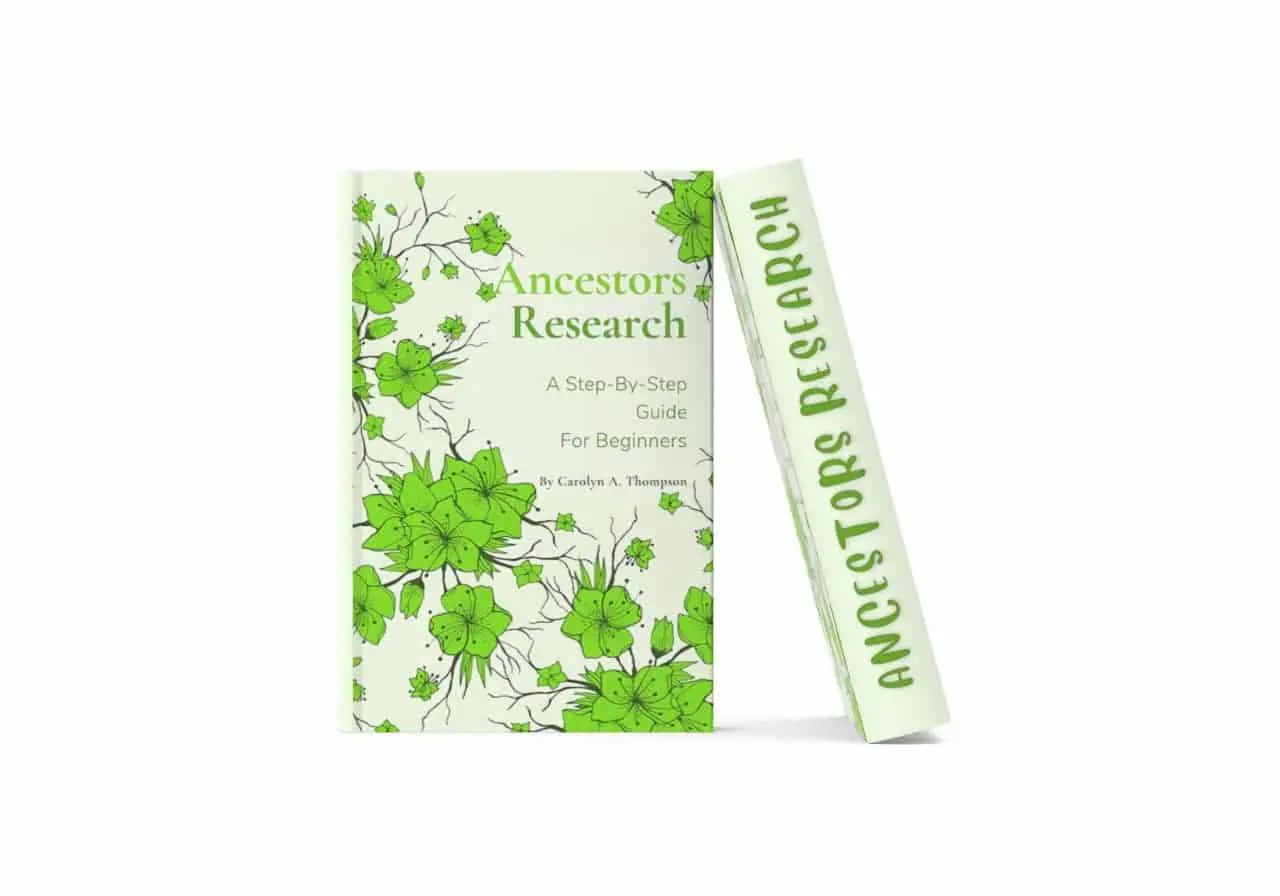
2 thoughts on “Ancestors’ Research | Free Beginner’s Guide”
Thank you Carolyn so much for your help with piecing together my ancestral past and connecting me with long lost loved ones.
Brian
It was my pleasure!